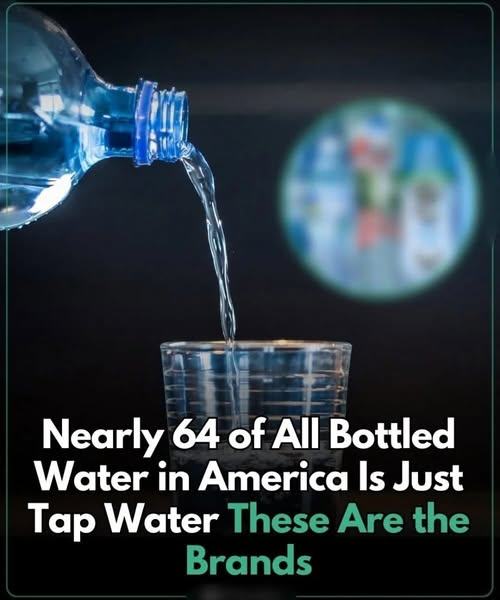If you’re reaching for a bottle of water thinking it’s cleaner or purer than what comes from your kitchen faucet, it might be time to take a closer look. A recent study has found that nearly 64% of bottled water sold in the United States is nothing more than repackaged tap water. That’s right—more than half of those sleek bottles with fancy labels and premium prices contain the exact same water that flows out of your sink. And in some cases, the quality is actually worse.

This eye-opening finding is stirring conversation among health-conscious consumers who have long believed bottled water was the gold standard for safety and purity. In reality, the source of many bottled water products is the same municipal supply used for household drinking water. The key difference? A plastic bottle and a higher price tag.
Some companies are more transparent than others when it comes to where their water comes from and how it’s treated. For instance, brands like Nestlé Pure Life, Penta Ultra-Purified Water, and Gerber Pure have received praise for openly sharing their purification processes and water sources. They make an effort to filter their water and communicate that information to the public, which gives customers more confidence in what they’re drinking.
However, not all brands are so forthcoming—or careful. Take Walmart’s Sam’s Choice and Giant Food’s Acadia, for example. These brands have been called out for high contamination levels, with some tests showing they even exceeded California’s safety limits for bottled water. That’s alarming, especially when you consider that bottled water is often chosen for its perceived safety. Instead of offering a cleaner alternative, these products may actually pose more of a risk.
So, why does this matter? Because U.S. tap water is already held to incredibly high safety standards. The Environmental Protection Agency (EPA) regulates public water systems and requires rigorous testing and treatment to ensure contaminants like lead, bacteria, and chemicals stay well below harmful levels. Bottled water, on the other hand, is regulated by the Food and Drug Administration (FDA), which holds bottled water to a slightly less strict standard than the EPA does for tap water.
Despite this, bottled water has long enjoyed a reputation for being healthier. Marketing plays a huge role in that perception. Labels featuring pristine mountain springs and words like “pure,” “clean,” and “natural” suggest a superior product. But as this study shows, those messages can be misleading. Bottled water companies aren’t always required to list where their water comes from, and even when they do, they may not disclose how extensively it’s been treated—if at all.
What’s more, bottled water isn’t immune to contamination. Investigations have revealed pollutants in some bottled water products, including traces of arsenic, microplastics, and industrial chemicals. These contaminants can make their way into the water during bottling, storage, or as a result of insufficient purification. This raises serious questions about whether bottled water is truly the healthier choice it claims to be.
And then there’s the environmental angle. Americans consume billions of plastic water bottles each year. Many of these bottles end up in landfills or littering oceans and natural spaces. Even when properly recycled, the environmental cost of producing and transporting bottled water is massive compared to simply turning on the tap. It’s a heavy price to pay for water that might not even be cleaner than what’s already available at home.
So what’s a smart consumer to do? Start by researching the brand of bottled water you’re buying. Check if they disclose their water source and purification method. If they don’t, that’s a red flag. And if they do—great! You’ll be better equipped to decide whether the extra cost is worth it.
Still, in most cases, tap water is your best bet. It’s heavily regulated, tested frequently, and incredibly affordable. If you’re concerned about taste or safety, consider using a home filtration system. These systems can remove chlorine, lead, and other unwanted substances, delivering crisp, clean water without the waste or cost of bottles.
In short, bottled water isn’t always what it seems. While some brands are committed to safety and transparency, many others are selling you little more than filtered (or sometimes unfiltered) tap water in a plastic container. Given the environmental impact, potential health risks, and lack of clear information, it might be time to rethink your bottled water habit. That faucet in your kitchen? It’s looking better every day.





